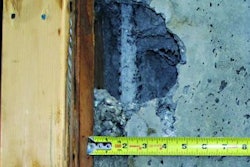Housing construction starts rose 3.9 percent in November over October's levels, but building permits slipped 4 percent as the market continued to limp toward 2010's end.
The Commerce Department reported Thursday that starts for single-family homes - the most important component of the data - rose 6.9 percent from October, after upward revisions for that month and September. Still, as economist Patrick Newport of IHS Global Insight Inc. pointed out, November's total housing starts were the ninth-worst since record-keeping began in 1947.
"This report is a mixed bag," Newport said. "Starts were up, but permits down. The single-family market showed signs of life, but the multifamily market lapsed back into a coma," falling 9.1 percent from October's levels.
Building permits for single-family homes rose 3 percent, demonstrating for Joel L. Naroff, of Naroff Economic Advisors in Bucks County, that "home construction is starting to slowly, and I mean slowly, come back alive."
Despite the third monthly decline in multifamily starts and permits, which fell 23 percent, Naroff said he believed that "with [baby] boomers looking for smaller places," that component "is likely to be in a long-term relative-growth pattern."
The Northeastern United States was the only region with a drop in housing starts (2.5 percent), "but that part of the country has led the way this year," he said.
David Crowe, chief economist for the National Association of Home Builders, said the modest increase in single-family starts and permits was "consistent with a low inventory of unsold new homes and our member surveys that have shown a degree of optimism among builders with regard to sales expectations in the next six months."
In six months, however, fixed mortgage interest rates are likely to be well above the record low of 4.17 percent reached in October.
Freddie Mac reported Thursday that the 30-year fixed rate reached 4.83 percent as, chief economist Frank Nothaft noted, "market concerns over stronger economic growth that, in the near term, could lead to an increase in inflation have sparked a rise in bond yields, and mortgage rates have followed."
Employment growth still seems the way out of the housing downturn.
"New jobs will require that homes be built nearby," Newport said. "More important, the household-formation rate will pick up once job growth takes off." Increases in household formation would reduce the glut of housing on the market, stimulating construction.
Before that can happen, prices need to stabilize, and the inventory of foreclosed homes, which competes with more expensive new houses, needs to be cleared.
On Thursday, CoreLogic Inc., which tracks sales nationwide, reported that home prices fell for the third month in October and were down 3.93 percent from the same month in 2009.
Subtracting sales of "distressed" properties, the decline would have been just 1.5 percent, CoreLogic said.



















